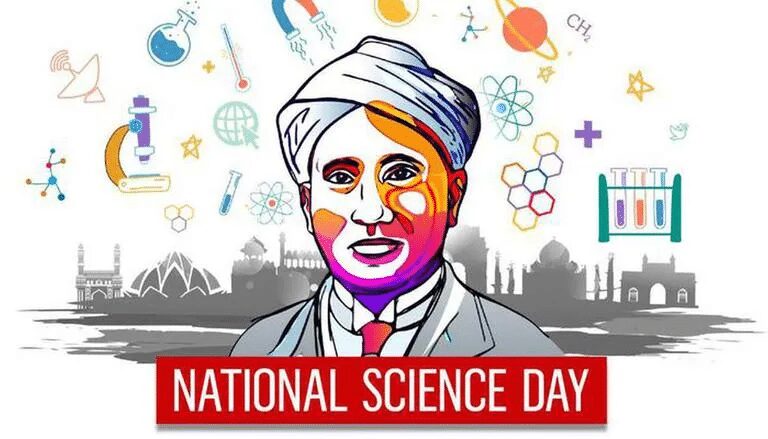Every year on 28th February, National Science Day is celebrated to commemorate the discovery of the Raman Effect by Sir C.V. RAMAN.
The Minister of Science and Technology, Dr Jitendra Singh unveiled the theme for National Science Day 2024 as “Global Science for Global Wellbeing”.
WHO WAS C.V. RAMAN

Sir Chandrasekhara Venkata Raman was an Indian physicist and the first recipient of Bharat Ratna in 1954.
He was born to Tamil Brahman Parents in the Madras Presidency on the 7th of November 1888. He was a born prodigy. At the age of 13, he completed High School and by the age of 16, he has already accomplished his bachelor’s degree in Physics too.
He is known for his work in the field of light scattering and how the deflected light changes its wavelength and frequency. This process came to be known as the Raman effect of Raman scattering.
He received the Nobel Prize in Physics in 1930 for this discovery and became the first Asian to receive a Nobel Prize in any branch of science.
He released his first research paper in 1906 on the diffraction of light. At the age of 19, he joined the Indian Finance Service in Calcutta. He also founded the INDIAN JOURNAL OF PHYSICS in 1926. He also became the first Indian director of the Indian Institute of Science. In 1948, he established Raman Research Institute.
CONTRIBUTIONS TO THE FIELD OF SCIENCE
SOUNDS
The scientific basis of musical sounds fascinated him. He worked on the theories of transverse vibrations of bowed string instruments. He studies the sound of various violin instruments and water splashes and this led him to perform an experiment with mechanically played violins.
He was the first person to conduct a scientific study on the sounds of table and mridangam sounds. He conducted research on vibrations of the pianoforte string which was known as Kaufmann’s theory.
These works in acoustics turned out to be really helpful for his later works on optics and quantum mechanics.
BLUE COLOR OF THE SEA
C.V. Raman started to investigate the phenomenon of the scattering of light in 1919. He began this experiment by finding out the reasons behind the blue color of seawater and this turned out to be his first phenomenal discovery in the field of physics of light.
On his way back from London, he examined the blue color of the Mediterranean Sea using just a simple pocket-sized spectroscope and a Nicol Prism. He questioned the hypothesis given by Lord Rayleigh in 1910. According to Lord Rayleigh, the blue color of the sea is due to the reflection blue from the sky and this came to be known as Rayleigh scattering.
Later on, in 1921 published an article “The Colour of the Sea” questioning the concept of Rayleigh scattering.
WHAT IS RAMAN EFFECT

After discovering the nature of light scattering due to which we see the blue color of the water, he began to focus on the principle behind this phenomenon.
On 28th February 1928, Raman and his new research associate obtained spectra of the modified scattering separate from the incident light.
The Raman effect is basically the phenomenon of change of wavelength of light that occurs when a beam of light is deflected by molecules.
It means that when a matter is excited by the light of one color, the atoms contained in it emit light of two colors. Amongst these two lights one light is different from the exciting color and the other one is of a lower spectrum. And the altered color produced is different from the nature of the substance used.
This phenomenon came to be known as the Raman effect and was one of the earliest proofs of the quantum nature of light.
His contribution to the field of physics introduced the world to the concept of quantum physics and in order to commemorate his contribution towards Indian Scientific research the Rajiv Gandhi government 1986 decided to celebrate the discovery day of the Raman effect as National Science Day.












